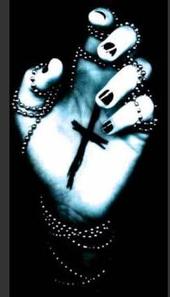 Just how far should the Church go to reach outsiders? That’s the question being raised. From the source article, Church Tries Goth Liturgy:
Just how far should the Church go to reach outsiders? That’s the question being raised. From the source article, Church Tries Goth Liturgy:
Churches continually strive to attract fresh faces into their flocks, and one of the challenges they face is getting the attention of younger people who may have turned their backs, according to the Rev. Lou Divis, deacon in charge at St. George’s Episcopal Church.
To address this quandary, the church on Main Street in Nanticoke embraced a new approach called the Goth Liturgy on Saturday night at 9. Unlike the traditional Sunday-morning service in which an organist, choir and congregation join in energetic hymns of praise, the Goth Liturgy is more “meditative,” Divis said.
The church is dimly light, lined with candles and full of the aroma of burning incense. Gregorian chants from the 12th century and faith-based music from techno bands such as Depeche Mode and Love Spirals Downward played softly during the hymn segments.
The servers were dressed in black robes and the guest celebrant, the Rev. Peter D’Angio from St. Luke‘s Episcopal Church in Scranton, was clothed in a flowing white robe. The sanctuary had a noticeably more intimate ambiance.
About 30 worshippers participated, some manifest with the Goth look.
Divis called the service a “different kind of spirituality”…
As expected, some are calling this heresy. Of course, they’re probably the same folks who believe women should wear head scarves in church and electric guitars are “of the devil.” But has St. Luke’s gone too far? I can tolerate black eyeliner and trenchcoats, but worshiping with Depeche Mode?
It’s part of an ongoing discussion in the Church about how to best reach different cultures. Early Jewish Christians struggled to assimilate Gentiles, tried to impose Jewish laws, and ban all remnants of paganism. Isolation, not assimilation, was the result. Church history is marked by such tensions. For instance, Christian mission organizations have, for the longest, debated the most effective ways to introduce the Gospel to unreached people groups. Should they condemn tribal myths and pagan practices or use them as bridges to a “greater reality”? Should they introduce “alternative worship” or integrate the locals’ customs? More recently, the Jesus Movement was pummeled by conservative pastors for allowing hippies in the house of God. After all, everyone knows organs and zithers are more “spiritual” than stratocasters and bass drums.
Culture and ideology are two different things. That’s true for the Goth subculture. Wearing black is not equivalent to living in the dark. Unless we’re prepared to say that Goths cannot be saved, we must concede a middle-ground. It’s why groups like Godscare exist and reaches out Goths, and sites like ChristianGoth.com contain sections like “Obsession with Death?” and “The Proper Christian Goth Attire”. Different, I know. But isn’t such internal jimmying how the Gospel gets assimilated in new sub-cultures?
So is a Goth liturgy so far off?
Yes, evangelism has its limits. We need not become pagan to reach pagans. But in the end, the real question is not whether a person sports black eyeliner, tongue studs, and army boots, but whether or not the Gospel is preached and embraced.















Truly.
Isn’t it about telling the truth? About serving others? The least of these? Somewhere along the way, churches decided they could “bring the increase” and “save souls”. Isn’t that the Holy Spirit’s work? And isn’t it our work to be obedient to where He leads and how He chooses to do things?
I wonder what a service dedicated to the wealthiest corporate executives would look like? Oh: the mega churches have those every Sunday?
Contextualization isn’t just about evangelism. It’s about realizing that the gospel exists within cultures–it digs into them and transforms them. It’s not just about reaching the Goths–it’s about taking the uniquenesses of this subculture and transforming it so that Goths can glorify God in a way that I couldn’t. That’s the beautiful thing about cultures–God isn’t limited to one. There’s no one Christian culture (or worldview). Each culture shows us a different aspect of God.
Of course, each culture is also corrupt (perhaps in different ways), which is why transformation is needed.
Honestly, I have no problem glorifying God with Depeche Mode (a band I happen to love). This is not to say that everything Depeche Mode wrote is up to the task. It is to say that God speaks through them at times, and we can speak that back to God.
I think ya’ll all know how I feel.
Well put, Heather. Because God has infused us with His image and put “eternity in our hearts” (Eccl. 3:11), there should be evidences of that in every culture. Including the Goth sub-culture. The debate, I think, is in the “transformation” department. What must Goths leave behind to be truly Christian? And are the changes we require of them personal preference or biblical imperative?